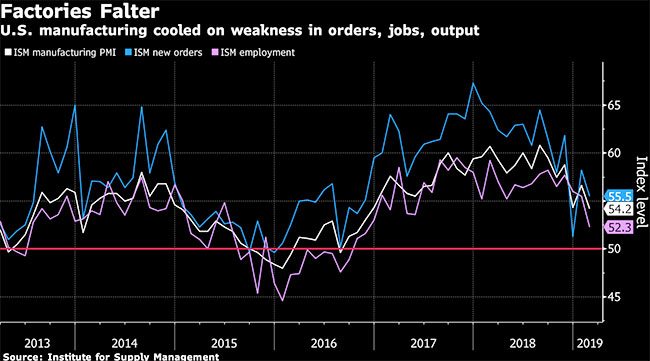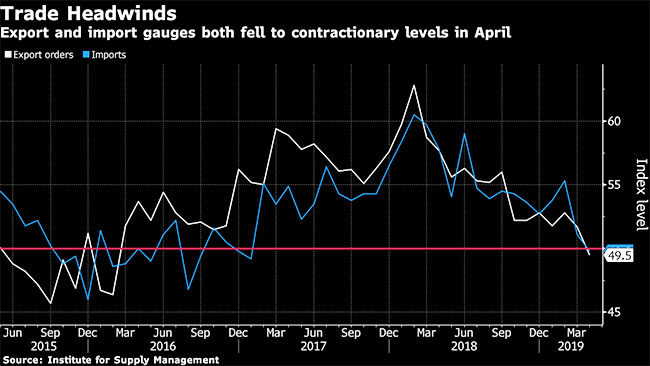Factory Gauge Falls to Two-Year Low as Orders Cool

A gauge of U.S. factories fell in April to the weakest level since late 2016, signaling that manufacturing headwinds extended into the second quarter as companies continue to confront uncertainty about trade.
The Institute for Supply Management index slumped to 52.8 from 55.3 the prior month, missing all estimates in Bloomberg’s survey while holding above the 50 level that signals expansion. Three of five components declined, including new orders, employment and production, according to the report May 1. Thirteen of 18 industries saw growth.

Treasury yields fell after the report to trade near a three-week low as U.S. stocks remained higher. A separate report May 1 from the Census Bureau showed construction spending fell in March for the first time in four months.
The unexpected weakness adds to signs that uncertainty about global growth and trade is dimming the outlook for producers across the world’s largest economy even as other measures of economic health have been looking more upbeat. The gauge for export orders fell below 50 for the first time in three years while imports missed the threshold for the first time in two years, the latest evidence President Donald Trump’s trade wars are weighing on factories. ISM’s employment gauge fell to near a two-year low, signaling weakness ahead of the May 3 U.S. jobs report.

Still, economists expect it to show April factory hiring rose after the first drop in more than a year and a half. Separate data released May 1 from ADP Research Institute showed U.S. companies added the most workers since July last month. The measure for new orders also slipped to near the weakest since 2016, indicating softer demand. At the same time, the inventories gauge increased, suggesting stockpiles continue to expand, a trend that likely will eventually reverse and be a drag on growth.




